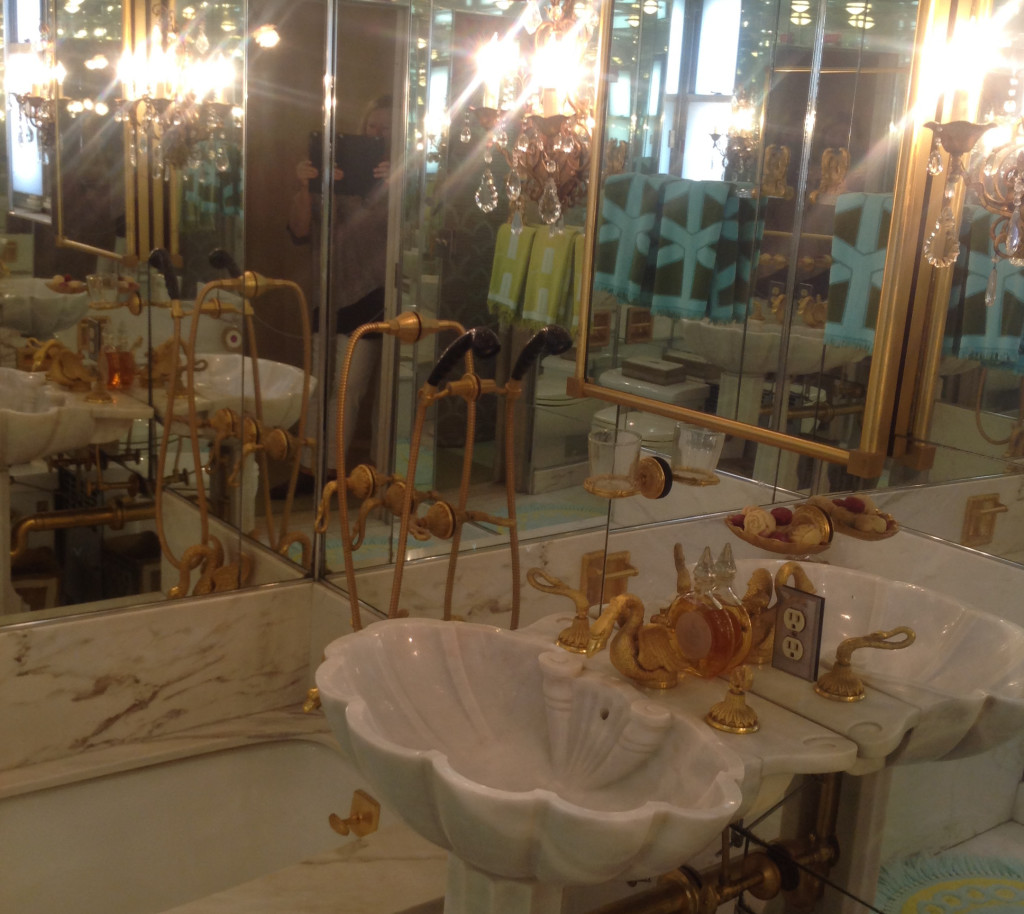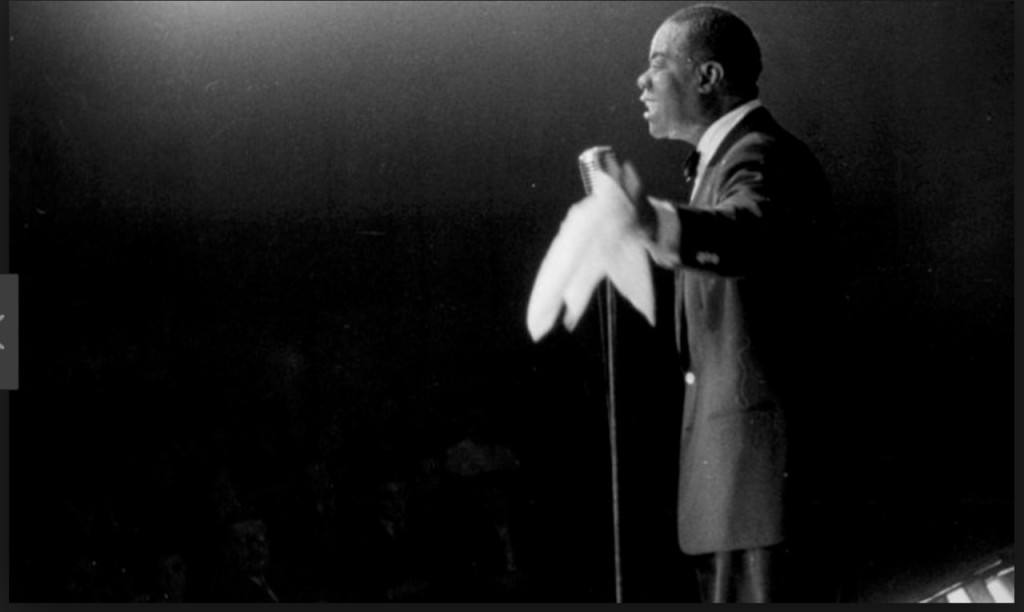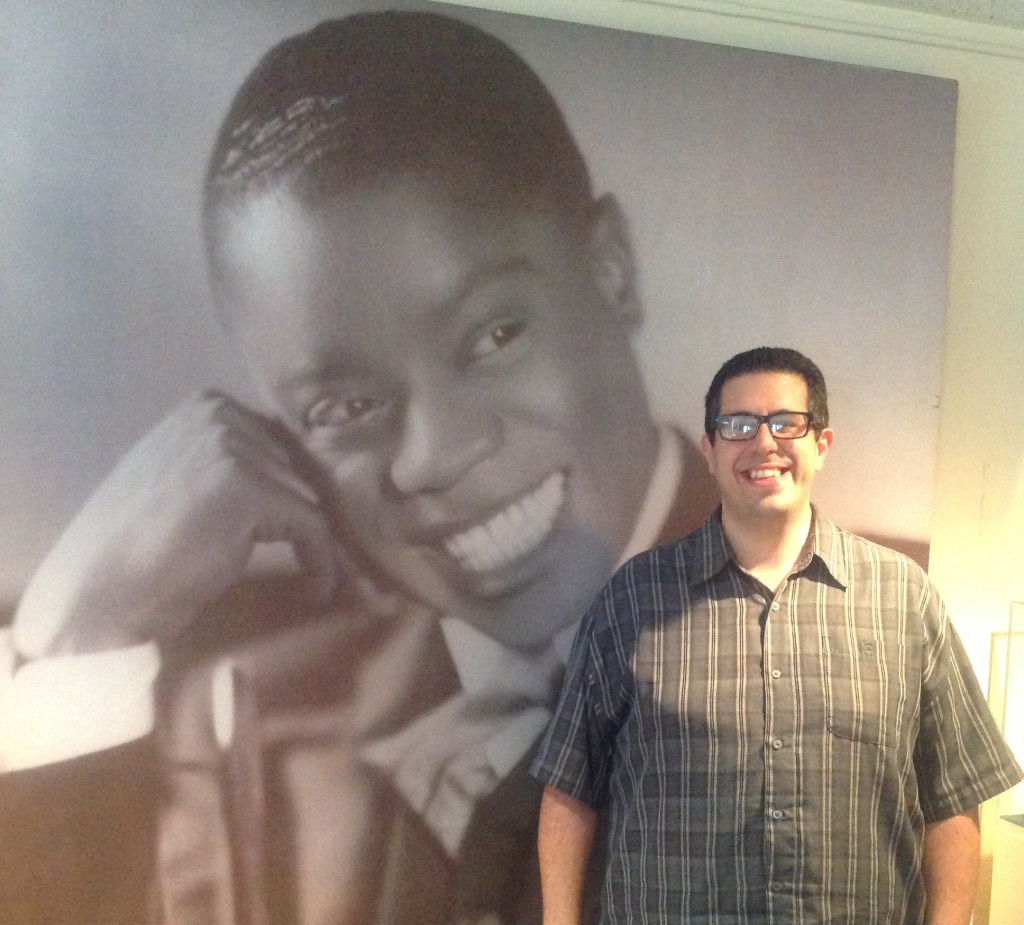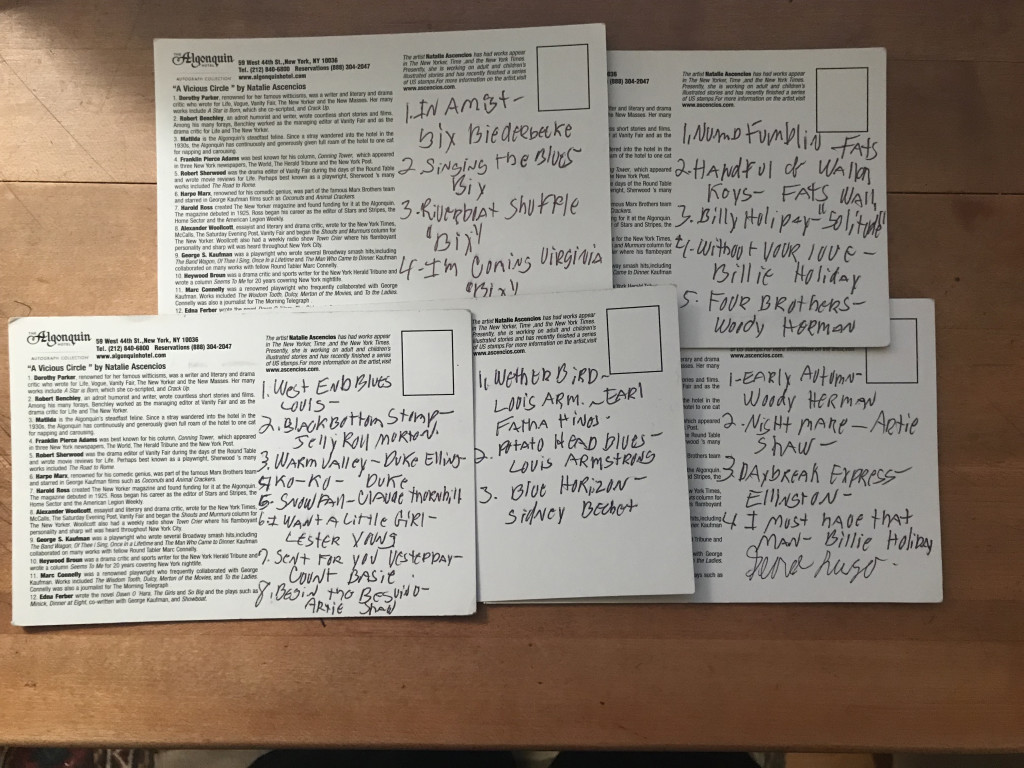The Wonderful World of Ricky Riccardi
Perhaps one of the most awe-inspiring facts about Ricky Riccardi, who directs research collections at the Louis Armstrong House Museum Collection in Queens, is that he never argued with his parents. Not once. “Why would I fight with these people?” he reportedly told his wife, Margaret, on their first date.
Riccardi was the youngest child in what he describes as a “big, loving Italian family,” in Tom’s River, New Jersey — raised by parents who indulged his every cultural whim. Thank goodness his whims led to a loving and careful exploration of the life and music of Louis Armstrong, who’s been his focus of study from the age of 15.
Riccardi was about that age in 1995 when he attended his first concert — The Preservation Hall Jazz Band at Harrah’s Casino in Atlantic City. “Maybe less than a year later, I was in New York with my parents on a day trip,” he recalls. “We were at the Barnes and Noble in Lincoln Center and there was a big advertisement. Lincoln Center was having a “Who Was Jelly Roll Morton? — Jazz for Young People” concert. It was starting in a half hour across the street from Lincoln Center and so they just rushed me over there to Alice Tully Hall. And that was my first time seeing (Jazz at Lincoln Center Musical Director) Wynton Marsalis and all that. In 1997, they did a Sidney Bechet concert … and that was like a big event for me.”
A Researcher’s Mind
Riccardi says that by then he already had a researcher’s mind. There was always music in his household and he’d begun asking his parents to take him to find sheet music from the 1920s and 30s. Fast forward to high school and Rutgers University announced a new master’s degree program in jazz history and research.
“Right then it became clear,” Riccardi says. “I needed to do whatever it takes to get into that program, write a book and become a well-paid jazz historian. What could go wrong?”
It took community college, a long series of hosting jazz programs on local radio, countless jazz columns for the school newspaper, learning jazz piano, joining a jazz trio and years of house painting to support his efforts, which increasingly became focused on Armstrong. He now has that master’s degree from Rutgers.
Studying the Master
Armstrong study demands deep listening and reading. “The works of Dan Morgenstern and Gary Giddens cannot be overestimated,” Riccardi says. “Dan Morgenstern knew him and so Dan would write this personal take like, ‘All right, there is the man.’ Gary, with his 1988 book, “Satchmo,” was the first to have access to Armstrong’s personal writings and the materials, which became the archive — which I now run. Early on, just by leaning on those two, I got a sense that this was a very deep man.”
And yet, Riccardi couldn’t fathom Armstrong’s many critics. “I watched videos of this guy and listened to the recordings and I laughed and I felt joy and felt good and appreciated the genius. How can anybody else see that and be filled with resentment? ‘He’s letting down his race.’ ‘He’s letting down jazz.’ ‘He’s letting down entertainment.’ I wanted to fully explore what makes a person think like that. I think I understand. I just totally disagree and I have based my life on it. I disagree.”
Digitizing the Master
In 2009, Riccardi joined the Louis Armstrong House Museum staff to digitize the archive’s extraordinary collection of reel-to-reel tapes, photographs and correspondence that Armstrong amassed — a collection that is now available in its entirety online. In 2010, he carved out a singular niche among Armstrong biographers by publishing What a Wonderful World — The Magic of Louis Armstrong’s Later Years.
Riccardi’s latest book, Heart Full of Rhythm, delves into Armstrong’s middle years. “Nothing will ever quite change my love for Louis’s later years and I still feel like people take those years for granted,” he wrote to us recently. “But digging into the middle years now, it seems that these years don’t even exist for many jazz people. Everyone has an opinion on the pre-1929 stuff (great!) and the post-1947 stuff (commercial crap!) but there’s this middle period that kind of never gets explored. And I have been doing so much deep research and really realizing that these years are really the years when Louis became a superstar.” Oxford University Press published Heart Full of Rhythm in 2020.
In the world of Armstrong-philes, Riccardi is reaching his own form of super-stardom.
Ricky Riccardi at Satchmo Summerfest
Each year, Ricky Riccardi makes a pilgrimage to New Orleans for Satchmo Summerfest. His daily presentations, which often include rare television footage of Armstrong in action, consistently draw the biggest crowds. You can find out more about Riccardi’s past appearances, along with the other presenters, at the Satchmo Summerfest website.
Connect with Ricky Riccardi and the Louis Armstrong House Museum
Website | Facebook | Twitter | Instagram | The Wonderful World of Louis Armstrong, a blog by Ricky Riccardi
Playlist
Every week, we provide a playlist of the music heard on our program. Please support your local musicians and record stores.
Armstrong’s Life in 20 Songs
New York’s Lincoln Center asked Riccardi to sum up Louis Armstrong’s career in ten songs. He eventually cut his list down to 20.
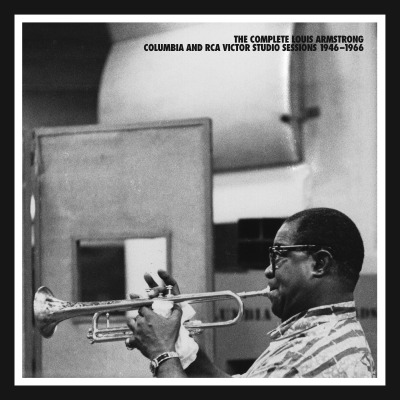
The Complete Louis Armstrong
Mosaic Records, the imprint of limited-edition jazz collections, released The Complete Louis Armstrong Columbia & RCA Victor Studio Sessions 1946 – 66 in April, 2021. As you might imagine, Ricky Riccardi’s fingerprints are all over this project. Not only did he contribute a 30,000-word essay (it’s really an understatement to call them “liner notes”), he helped bring the set to life in other ways.
Riccardi posted on his blog how a bad edit in one Armstrong recording had bothered him for over 20 years. And he tells how he seized the opportunity to finally right that wrong:
Michael Cogswell
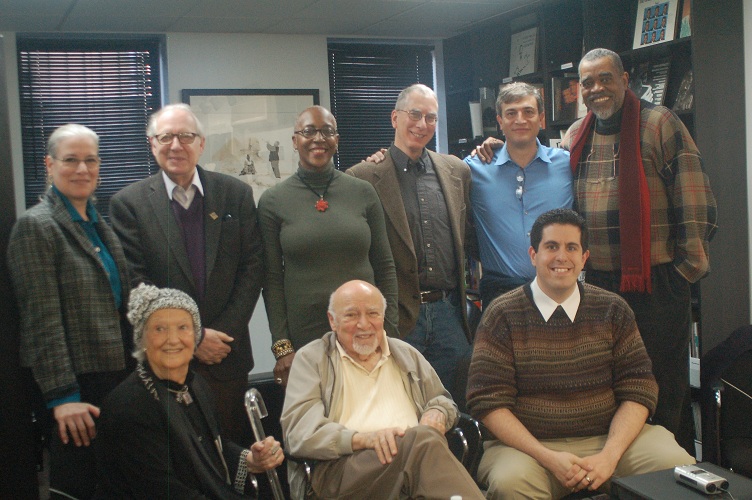
Our program is dedicated to Michael Cogwsell (pictured, top row, third from right), who died April 20, 2020. He was the long-time Executive Director of the Louis Armstrong House Museum. You can read more about his life and connection with his protégé Ricky Riccardi (bottom row, right) on our Big Ol’ Blog. And there’s more info on the people in this picture at Riccardi’s website.
The Real Ambassador
By the end of the 1930s, Louis Armstrong was already a pop superstar in the US. He could be seen in movies and heard on the radio, and his live shows were more popular than ever.
Then, in 1955, Armstrong embarked on a historic world tour. His engagements in Milan and Amsterdam were immortalized in the live album Ambassador Satch, and he was a personal guest of Prime Minister Kwame Nkrumah in Ghana.
That tour inspired the Dave and Iola Brubeck jazz musical The Real Ambassadors, and a decade later, the State Department even sent Armstrong’s band to East Berlin in an attempt to thaw the Cold War and promote American goodwill behind the Iron Curtain.
George Lugo’s Greatest Hits
George Lugo works as a waiter at the Blue Bar in the Algonquin Hotel on W. 44th St. in Manhattan. He’s also a jazz aficionado and has been listening to Louis Armstrong for half of a century. It just so happened that Gwen visited the Algonquin while collecting interviews for this show. So naturally, Gwen took out the tape recorder and asked Mr. Lugo to talk about the impact that Armstrong had on his life. But Lugo went a step further: He got some hotel postcards and wrote down his all-time favorite jazz recordings. Lugo is just one of countless New Yorkers in love with the music of Armstrong. While they each have their own lists, we’re sharing Mr. Lugo’s here for you now.
For Eppie Ozën
Never have I had so much fun on assignment. [In 2017], my friend Eppie Ozën and I went to the Louis Armstrong Collection at Queen’s College in Flushing, New York and had such a good time that I barely made my flight back to New Orleans. Ricky Riccardi, an Armstrong biographer who directs research at the collection, could not have been more welcoming. And, quite frankly, it was a thrill to be among Armstrong’s possessions. His wooden stereo console was mid-century modern perfection. His luggage was top-of-the-line, as were his books, his 2,000-record album collection, his homemade collages and, of course, the hundreds of reel-to-reel tapes he made “for posterity.”
For historians, there cannot be another person from the 20th century who did more to communicate directly with subsequent generations. Riccardi can listen to Armstrong every day — in song, in reading his correspondence, and in cherry-picking selections from the now digitized reel-to-reel tapes. With that instantly recognizable voice, sometimes tired, sometimes cranky — often merry and sly — Armstrong speaks with a kind of intimacy to people he would never meet in his lifetime. How many of us can manage that?
Had I gone alone, it would have been a fabulous day. But my friend Eppie makes the fabulous spectacular. She took almost all of the photographs and videotape for our story and seemed to personally feel our great good fortune to be in this Armstrong mecca.
A Tour of the House
When we left the archives, we headed straight to the Louis Armstrong House Museum in nearby Corona for a full tour. Eppie took photos there, as well. She lives outside the U.S. and has long been a friend of Music Inside Out. But on that day, she was a reporter for the show. It was wonderful sharing the experience with her. Eppie now loves Armstrong almost as much as I do.
When it came time to scramble for the airport, we were still in Queens and my luggage was in a distant quarter of Manhattan. I went home with only my reporting kit and Eppie mailed my suitcase back to me in New Orleans. Now, that’s above and beyond, even for a friend. But having known Eppie for most of my life I can say that I knew she would try to make it work, if only to finish the day on a joyous note. Eppie does nearly everything — as Armstrong might say — “in the cause of happiness.”
— Gwen Thompkins
